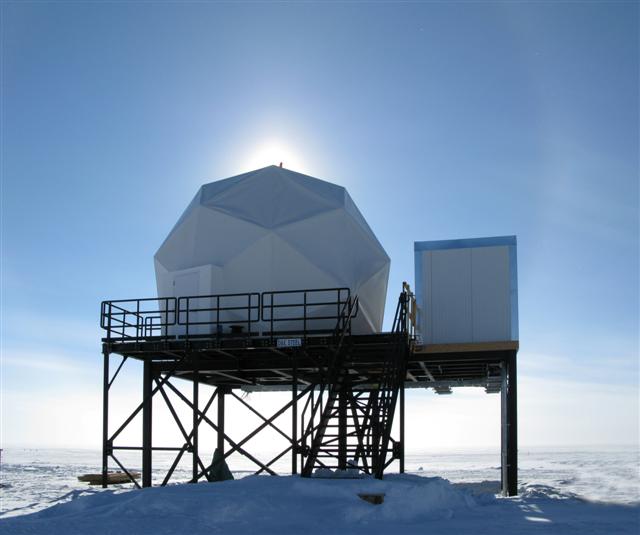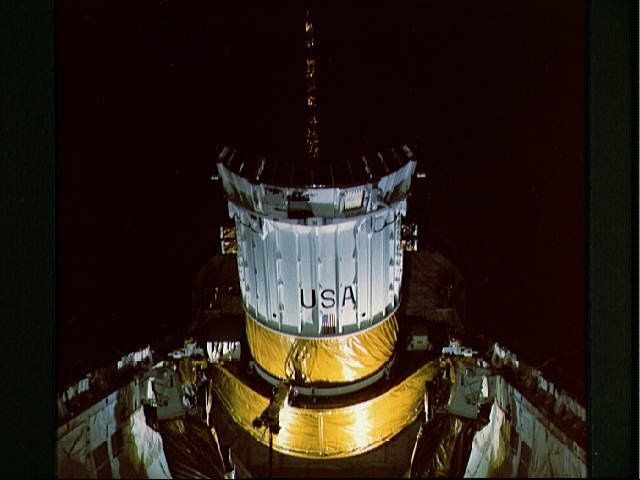Signed offNASA satellite retired after long career of communications supportPosted July 9, 2010
After a long career providing communications support, including a decade at the South Pole, NASA’sTracking and Data Relay Satellite From 1983 to 1998, TDRS-1 allowed NASA to talk to other satellites in orbit. From 1998 to 2009, NASA reassigned TDRS-1 to support the National Science Foundation’s Related Stories
Launched aboard space shuttle Challenger’s maiden voyage in April 1983, TDRS-1 was the first satellite used to support launches from NASA’s Kennedy Space Center in Florida in the early 1990s. It closed a communications dead zone over the Indian Ocean, providing 100 percent coverage of the space shuttle and low-Earth-orbiting satellites. The satellite was able to see both the North and South Poles because of its orbit. The first Internet connection and live webcast from the North Pole were transmitted through TDRS-1. It relayed the first Pole-to-Pole phone call that connected the South Pole and the North Pole. And it supported the first global television broadcast from the South Pole Station In cooperation with the National Science Foundation (NSF), an uplink/downlink station for TDRS-1 was installed near the exact South Pole in January 1998. This terminal gave scientists at the U.S. Antarctic Program’s TDRS-1 was instrumental in supporting innovative astronomy and astrophysics research programs at the South Pole Station, including the one-of-a-kind IceCube Neutrino Observatory and the South Pole Telescope (SPT) IceCube is an array of detectors buried deep in the ice designed to detect subatomic particles from deep space that can provide details on interstellar phenomenon like supernovae. The SPT takes advantage of the South Pole’s high altitude and extremely dry air to search for galaxy clusters, which will eventually help scientists understand the nature of dark energy, a mysterious force believed to be responsible for the accelerated expansion of the universe. During a medical emergency in 1999 at the South Pole Station, TDRS-1’s high-speed connectivity allowed station personnel to conduct telemedicine conferences, and doctors in the United States guided Dr. Jerri Nielsen, who was diagnosed with breast cancer, in performing a self-biopsy and administering chemotherapy. In 2002, doctors again performed a telemedicine conference with the research station, this time to assist with knee surgery on a meteorologist spending the winter in Antarctica. On June 13, 2010, the first-of-its-kind communications satellite arrived at its final destination, about 22,500 miles above the planet. The change-of-orbit maneuver began on June 5 and moved TDRS-1 from its geosynchronous orbit 22,300 miles above Earth to its final destination. The process took eight days to ensure the satellite reached its final destination without adversely affecting its small maneuvering thrusters. Once the final orbit was established and the remaining fuel was removed to prevent potential accidents, NASA shut down the satellite on June 26. NASA plans eventually to retire the entire TDRS constellation in this manner in order to protect other geo spacecraft from orbital debris. Since TDRS-1 entered service, NASA has placed eight other TDRS into specific geosynchronous orbits. The second TDRS satellite was lost with space shuttle Challenger in January 1986. The Space Network continues to use the TDRS system to relay data and communications from more than 15 customers, including the space shuttle, the International Space Station, the Hubble Space Telescope The NSF built a new ground station at the South Pole during the 2008-09 field season to track additional TDRS satellites in anticipation of the demise of TDRS-1. [See related story: Keeping connected.]
Adapted from a National Science Foundation press release
|



For USAP Participants |
For The Public |
For Researchers and EducatorsContact UsNational Science FoundationOffice of Polar Programs Geosciences Directorate 2415 Eisenhower Avenue, Suite W7100 Alexandria, VA 22314 Sign up for the NSF Office of Polar Programs newsletter and events. Feedback Form |



